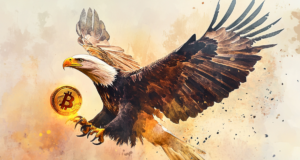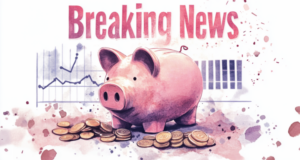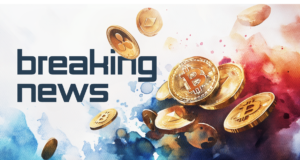Zapper Making Blockchain Accessible

Quests, easy-to-read blockchain, and a Twitter-like feed for following others on the blockchain. That’s what Zapper, which describes itself as your home to Web3, is all about.
On this page
We need to make blockchain as easy as possible to understand. So the Zapper’s mantra goes. How to do it? GNcrypto had an opportunity to find out the answers straight from the horse’s mouth in an excellent interview with Zapper’s ops lead, Marc-Antoine Proulx.
GN: Hello, Marc. Thank you for your time and for chatting with GNcrypto. We have several questions for you. First, can you tell us a little bit about the Zapper project and why it stands out?
Marc-Antoine Proulx: Thanks for having me. Zapper was initially known for its portfolio management or dashboard that allows anyone to see their position into different blockchain investments like DeFi, NFT, and DAOs. We have now evolved into a complete blockchain explorer, allowing our users to surface more data and take informed decisions. Our mission is to make the blockchain readable and accessible to everyone.
We allow people to see their investments and what others are doing on chain. And we try to make it as easy to read as possible. So, if you're blockchain savvy, you can go on Etherscan, read a block, and try to make sense of everything happening.
But if you’re not, it’ll be difficult for you to understand what’s going on, and that’s what we’re trying to fix. We want to level the playing field to allow everyone, regardless of how blockchain savvy they are, to make informed decisions based on information gathered on the chain.
We’re not into cannibalizing competitors
GN: And who are your competitors in this field? Everything's pretty crowded these days.
Marc-Antoine Proulx: Yeah, for sure, but still, it’s hard to point at specific competitors. For example, if we only look at the portfolio product, some projects like DeBank and Zerion also aggregate the data and show you what you have in your portfolio. However, we’re all taking different approaches and routes.
For example, Zerion is really focused on developing a wallet. Having a wallet is not on the roadmap for us at the moment.
DeBank is developing an L2 and is really focused on integrating as many DeFi positions as possible.
The portfolio product is only a small part of our service. If we talk about abstracting the blockchain, then I don't know any other big projects that are doing what we're doing right now in terms of showing you a feed of what's happening in a readable way. Plus, being able to explore and interact with it. So, we might have different competitors, in specific parts of our website, but we have a very complete product. And also, we like to look at the competition to make sure we're on top and build the best product out there.
We believe in a positive sum game where we can all have a piece of the growing blockchain pie. So, that's the kind of approach we like to take instead of cannibalizing each other.
GN: You seem very humble, which is great. And yeah, cannibalizing isn’t the best thing. How many users do you attract?
Marc-Antoine Proulx: So, the numbers are changing a lot because we went from a big bull market where we hit 500,000-600,000 monthly active users. But now we're kind of at the bottom of the bear market, and we're currently averaging, let's say, 200,000-300,000 monthly active users and around 20,000 to 30,000 daily.
I’d rather consider the retention rate; it looks good on the web and mobile, both iOS and Android. That’s a lot more telling, especially in the current market.
GN: Do you have users worldwide, or are they based in one region?
Marc-Antoine Proulx: We have users worldwide. Our biggest market is still in North America, but we also have a big user base in Europe and other parts of the world, like Asia and Oceania. Pretty much everywhere.
GN: What is the regulatory situation in Canada? Because in the US, the SEC and all other institutions are tightening their grip on crypto and blockchain.
Marc-Antoine Proulx: Though most of our team is Canada-based, Zapper is incorporated in the US. Regardless, in Canada, we always feel the impact of the US movements. Our economies are very intertwined. But we didn’t have any roadblocks so far.
GN: That’s cool.
Marc-Antoine Proulx: Yeah, it's gonna be interesting to see what happens with the SEC. We see that Coinbase is super active. In fact, proactive. I think every web3 company can appreciate the fact that they are putting in the resources and efforts to move the ecosystem forward.
Zapper lore and Zapper Terminators (Not Austrian heavyweight lifters, though)
GN: Hopefully, the SEC will be a little bit less traditional, and its approach less outdated. I saw on your site that you offer NFTs. So what's that about? By the way, they were a big thing, I think in 2021. Are they still popular?
Marc-Antoine Proulx: Sure. Yeah. It's still there. NFTs are still a big part of the market and are super important for bringing in new users. But in terms of the Zapper NFTs, they mainly were part of what we were calling seasons. We had two seasons involving quests.
Our users were coming to the website to do quests like log in daily, swap on different networks, provide liquidity in pools, farm certain tokens, and stuff like that. They were earning points called Volts that they were able to redeem for NFTs at the end of the season.
Those quests were basically made to let people explore the blockchain. So if you’re a new user, and have never swapped or bridged, the quests were giving you an incentive to try new things because you may get an NFT at the end.
Those seasons have ended now, but you can still buy a Zapper NFT on the secondary market.
GN: What was the purpose of that? Educational?
Marc-Antoine Proulx: Yeah, absolutely.
GN: And what were the NFTs?
Marc-Antoine Proulx: We created the NFTs based on Zapper’s lore. We’ve worked with a digital artist from the UK to create the art. Some of them are related to other communities, like SushiSwap and Uniswap. There's also the Zapper Terminator, which we call our developers. So, it's all based on inside jokes or made to attract other communities.
GN: Maybe they're also Austrian heavyweight lifters? *laughs*
Marc-Antoine Proulx: *laughs* Yeah, we have a few teammates that are super jacked. We call them terminators because they work out in the gym but push a lot of code as well.
GN: Cool. How many blockchains Zapper supports right now?
Marc-Antoine Proulx: If I'm correct, we are supporting 11 blockchains currently. Ethereum, Arbitrum, Optimism, Polygon, BSC, Gnosis, Aurora, Avalanche, Celo, Moonriver, and Fantom.
GN: And which of them is the most popular? I mean, I think I know the answer. But…
Marc-Antoine Proulx: Yeah, of course. It's Ethereum. But Polygon, Optimism, Arbitrum, and BSC also have decent volumes.
GN: Your platform offers to save you up to 75% on gas fees. So, how does that work?
Marc-Antoine Proulx: I'm not sure that's true. I need to find out where the number is coming from. Still, we have a swap feature. We are using 0x to optimize our swap routes. So it takes into consideration different routes from different DEX and finds the best route for you. Accordingly, you can save there and get more for your swap by optimizing the route. It also optimizes the gas fee a little bit, but I'm not sure of the exact percentage or number.
GN: Thanks for explaining, as some people do get confused. Often, numbers are just taken out of context. Let's talk a little bit about security. Another day, another hack. How safe is your protocol?
“We’re definitely safer now than we used to be.”
Marc-Antoine Proulx: It’s definitely safer than before. Basically, right now, there's no real way you can get hacked on Zapper. However, there are some people trying to impersonate the website by, for example, changing a letter in a new domain. We are working with an AI-powered company called Doppel that specializes in taking down those websites. On the Zapper website, though, we don’t have smart contracts currently, so if you are on the official website, it’s safe.
We used to have what we call Zap, which was like an easy way to get into liquidity pools and farms, but those features have been sunset.
Instead, you connect your wallet to see what you have in there and follow other people. So, it’s a signature, not a transaction with gas. Also, we're using 0x, a third party for swaps; on the bridging side, we're using Socket, a bridge aggregator.
GN: Impersonation happens pretty often. Do you think that will eventually fade away? And what could be done in order to tackle this problem?
Marc-Antoine Proulx: Yeah. Unfortunately, I don't think it will fade away.
As I said, we are working with a third party to track impersonation on our domain name, NFT collections, Twitter accounts, and Telegram groups, like anything that can impersonate Zapper. They take them down so that fewer users are exposed to this.
But I don't think that scams will ever go away. It’s all about user education. You need to make sure that you use the right noncustodial wallet and have security in place. So make sure you have a ledger, use a cold wallet for your most valuable assets, double-check your URLs, etc.
Blockchain right now is complicated to use. We are trying to fix that. A lot of other protocols are trying to do that as well. But it also comes with comprehensive education.
GN: Probably all due to a word that starts with a g: greed. What do you think about the current market? It seems a little bit shaky. Are we in a bull market? What do you think?
Marc-Antoine Proulx: No, no. I believe we're at the bottom of it. Not the lowest point, but I think we've seen it. But at this point, I think the market has proven to be pretty resilient. We thought we were at the bottom, and then FTX went down and everything stayed pretty flat, which is kind of good news.
We've also seen the depegging of USDC due to the collapse of US banks, but it came back super quickly, and ETH went up after that.
I don't want to say we’ve touched the bottom, but we definitely see that the market is resilient. And I don't see how it will go much lower than that. It's my personal analysis, though. I'm not a specialist.
NFTs are a great way to onboard people
GN: Let's go back to NFTs. What do you think about them in general? We have quite a few articles about NFTs. Are they really worth something, in your opinion? Or is it just, you know, hype?
Marc-Antoine Proulx: It's a good question. I'm super enthusiastic about NFTs in general. It's now most of my portfolio. Good or bad.
But NFT enables many different things on the blockchain, by being proof of ownership that can easily be translated outside the blockchain.
It's also a really good channel for onboarding new users. It's a lot easier to understand what an NFT is than to grasp all the decentralized finance concepts like farming, pooling, or how a DEX works.
In the last year, a lot of new people came into the space through NFTs. So it's a good medium for onboarding. And it doesn't have to be through like “you're going to make 100x on your investment”. Rather, you're gonna buy this and be able to access different communities or find a community that you like and has the same values as you or play the same game that you play, or go to the same concerts, etc.
So yeah, I think it enables a lot of cultures that people can identify with and actually own a part of, maybe create new content with the NFT and all of that.
I'm really enthusiastic about the combination of art and technology. I do think digital art is a real art, and Ethereum gave a platform and an opportunity for digital artists to make some money. They express themselves and really distribute their work, which is really really cool.
Then there are other NFT use cases. I think that in the future, our mortgages and houses will be NFTs. You see the use cases with luxury brands. Instead of having a paper certificate to say that your diamond or your Gucci purse is real, you have an NFT that proves its authenticity. If you sell it, you transfer the NFT. It’s a lot more efficient, and it leaves traces.
GN: Then we all need to be onboard if we want something like real estate to turn into that. We'll see whether that happens. Maybe in 20–30 years. We're already glued to our phones, right? Maybe the next generation will be more open to the idea than Gary Gensler or Warren Buffett.
Marc-Antoine Proulx: We are extremely early in the technology, right? Using a computer in the early internet days was super hard. It was a black screen. You almost had to know how to code to use it.
I think we're kind of at the same stage right now with the blockchain. At some point, we're going to use the technology without even knowing it. Some tools are just going to be built on it. It's probably the only way we get to mass adoption, but will definitely be faster than 20–30 years.
GN: How many years did it take for the internet to go mainstream? Probably 20?
Marc-Antoine Proulx: Maybe 10-20. Technology moves exponentially fast, and our grandparents are now using the internet. This will probably happen more quickly with blockchain technology, Web3, NFTs, or whatever new thing comes out.
GN: I totally agree with you. I think that grandparents use their children as their IT support *laughs*
Marc-Antoine Proulx: *laughs* I'm trying to explain what crypto, blockchain, Web3, and NFTs are at family dinners. It's super abstract, right?
But then, have you ever tried to explain what the internet is? Oh, you go like: well, you’ll be able to send information through a plastic box. You know, send messages and talk to your friends. And they ask you: but why would you do that through a plastic box when I can send a letter through the mail? It’s extremely abstract, but now it's part of everyone’s day-to-day life. I think the same will happen to crypto.
No bullshit on the blockchain
GN: On a final note, let's talk a little bit more about your company and, your goals, your plans. And tell us a little bit about your roadmap.
Marc-Antoine Proulx: So, the big product we are working on right now and currently in beta.
It's an on-chain activity feed. You can follow different wallets and see exactly what they are doing on-chain. For example, you may be interested in the activity of a respected NFT collector, a DeFi degen, or just a friend and see what they're doing and transacting to decide what to buy, sell, or what community to join. It’s part of our mission to make the blockchain readable and accessible to everyone by making that data easy to ingest.
Also, we're trying to bridge the gap between the noise in the market and the real actions happening on-chain. Currently, people use the blockchain like a single-player game without knowing what others are up to. You hear noise on Twitter, Discord, or Telegram; sometimes it's too late to act. And people won't tell you, what you have to buy, before it happens and you never know if it's true. Like, is this NFT influencer really telling you to buy this NFT cause it’s a good investment, or just to pump his bags? Did they really buy it themselves? Now seeing their action on chain and seeing what they really do, you can take better-informed decisions.
So, that's the gap we are trying to bridge, showing you the real data instead of relying on information that can't be verified. The activity feed plays a major role in that. It makes your life easier by interacting with the data and exploring different collections, DAOs, tokens, etc. Our goal is to make everything readable and show you what’s happening.
The beta version is out and available, but the official launch is coming soon, and there's going to be a lot more after that.
GN: That's kind of like allowing someone to verify whether something is bullsh*t or not.
Marc-Antoine Proulx: Yup. With the transparency of the blockchain, you can't bullshit on what you've done.
We were talking about new people coming into the space and how we educate them. But being able to understand what's happening in the market is a really big part of learning what you can do and taking financial decisions.
So yeah, that's really what the blockchain is about. The transparency. If you are curious about what I've described and what is happening on-chain, you can visit our website zapper.xyz.
GN: And immutability, right? Transparency and immutability are the two keywords. Thank you so much. It was a lot of fun. And we wish you luck. Thank you for the interview.
Marc-Antoine Proulx: Thanks a lot. It was a pleasure. Thanks for having me.
The content on The Coinomist is for informational purposes only and should not be interpreted as financial advice. While we strive to provide accurate and up-to-date information, we do not guarantee the accuracy, completeness, or reliability of any content. Neither we accept liability for any errors or omissions in the information provided or for any financial losses incurred as a result of relying on this information. Actions based on this content are at your own risk. Always do your own research and consult a professional. See our Terms, Privacy Policy, and Disclaimers for more details.

























